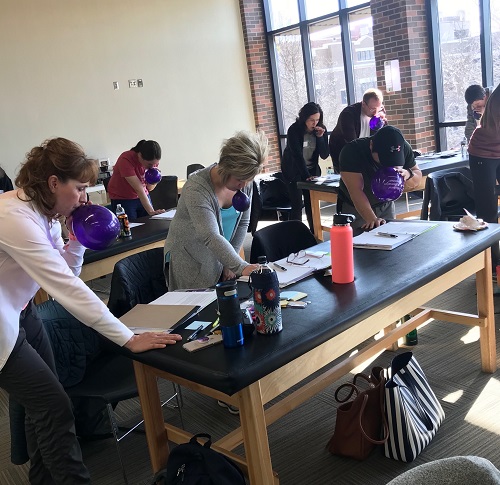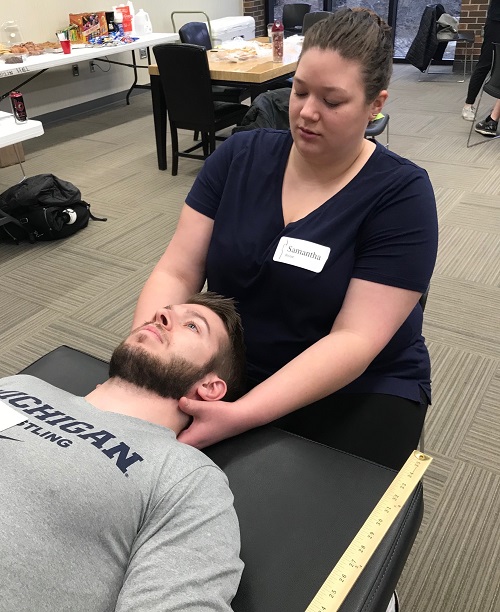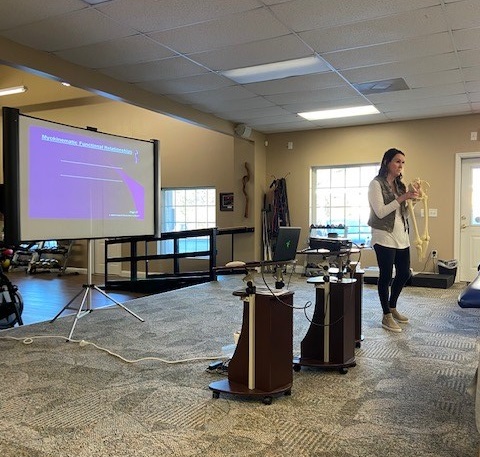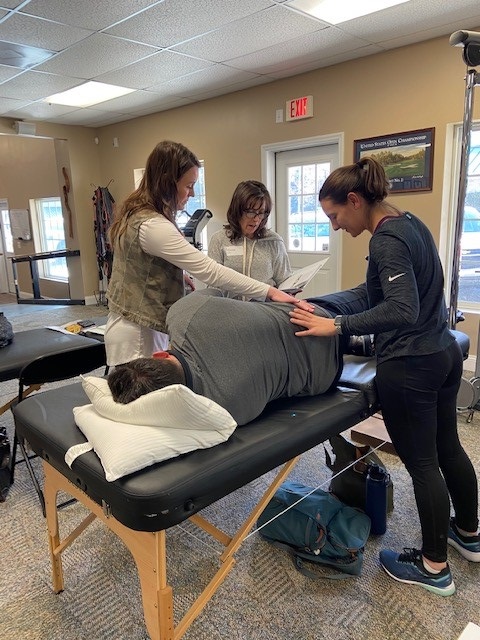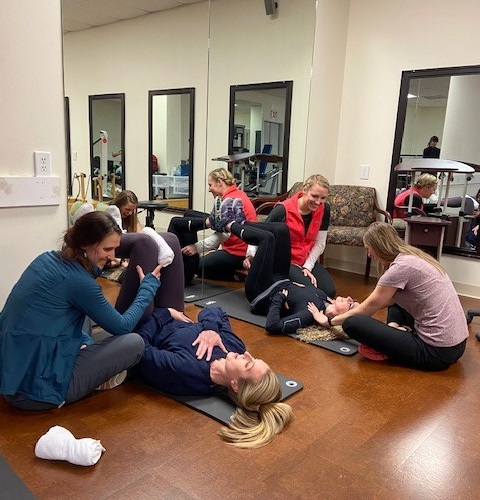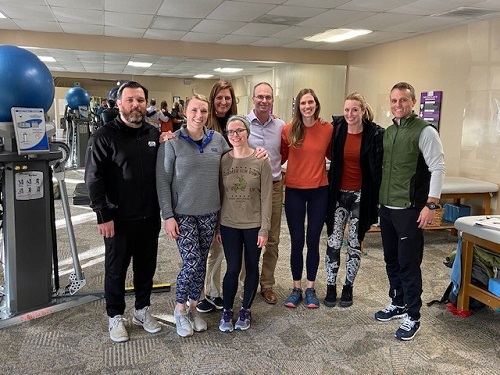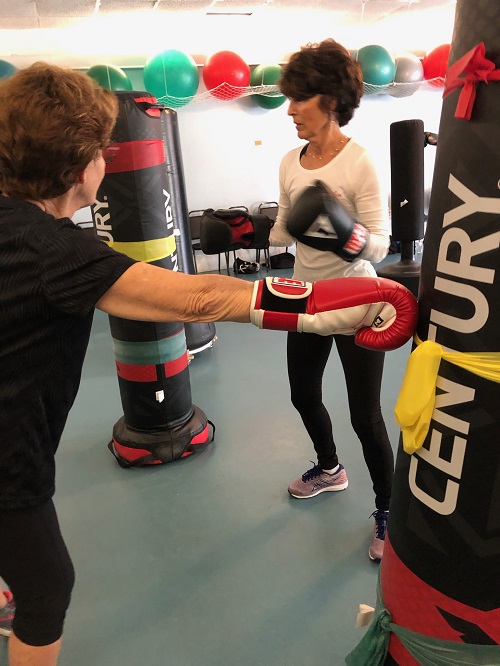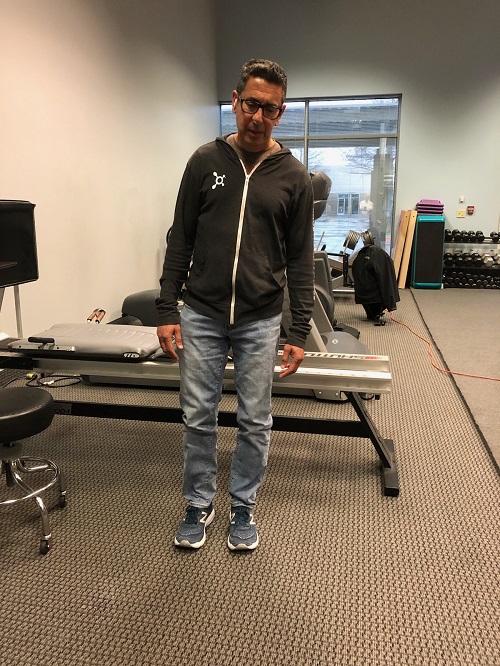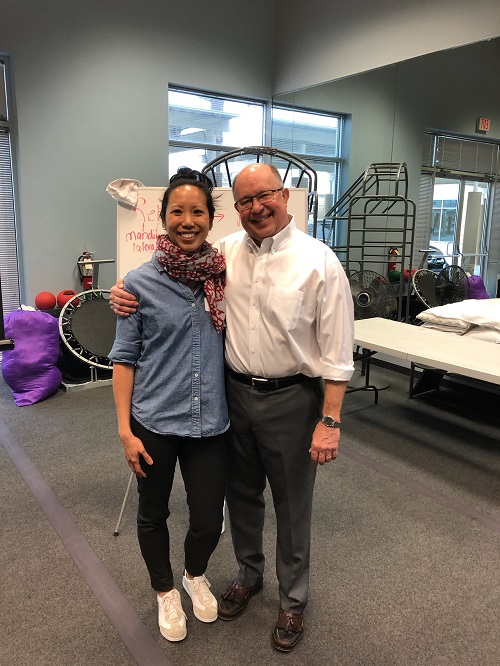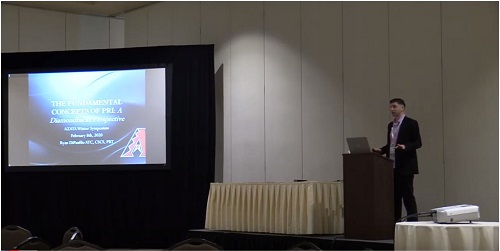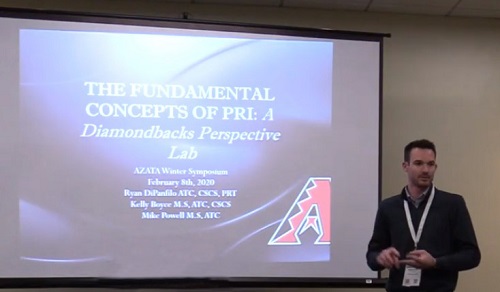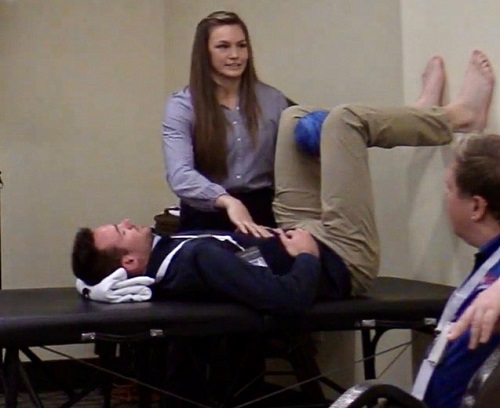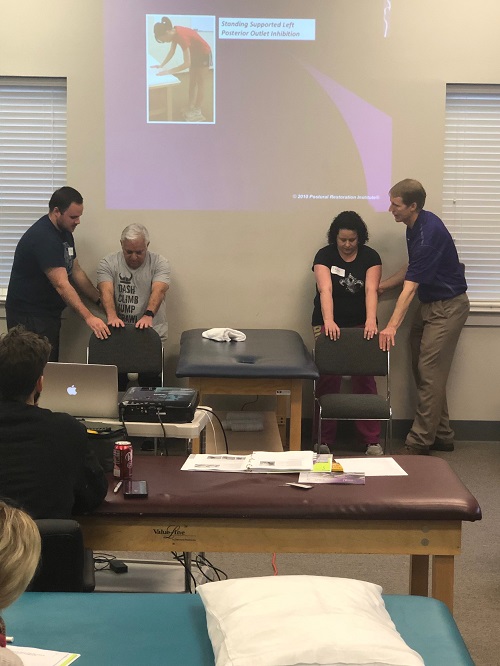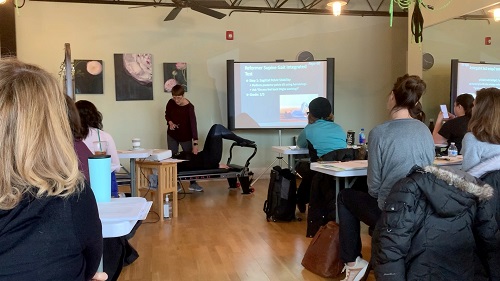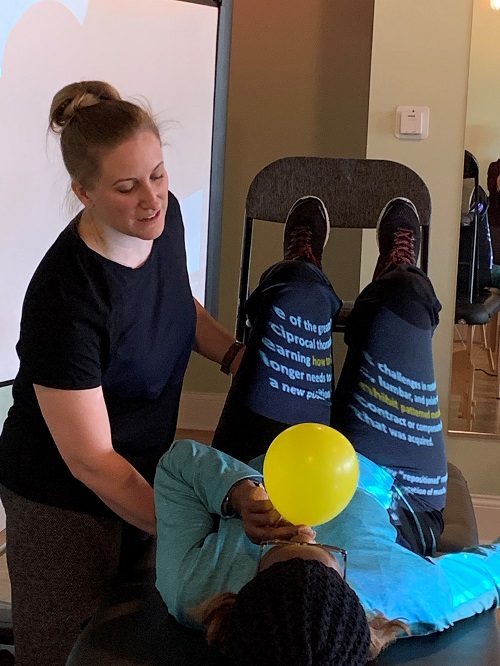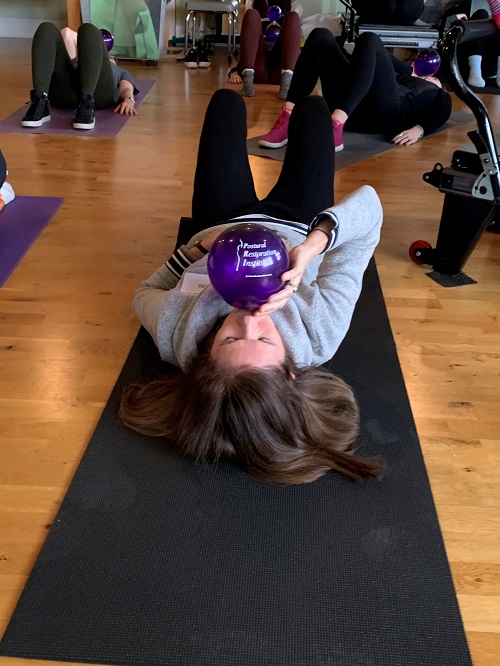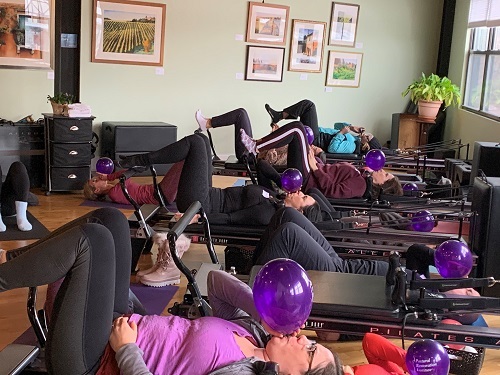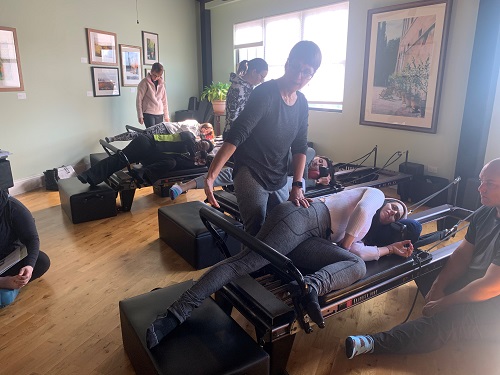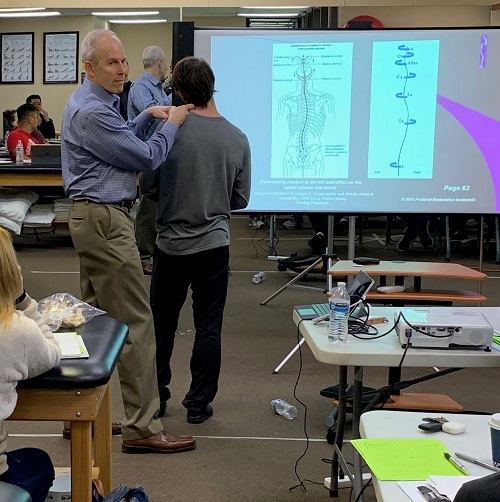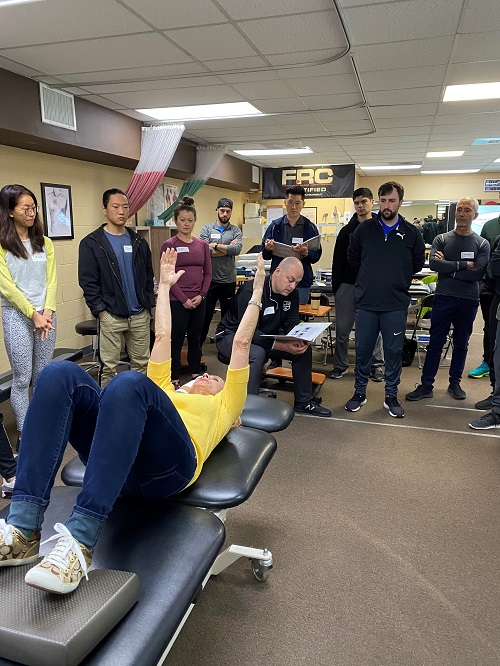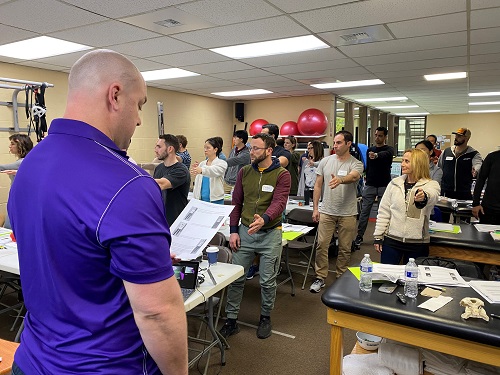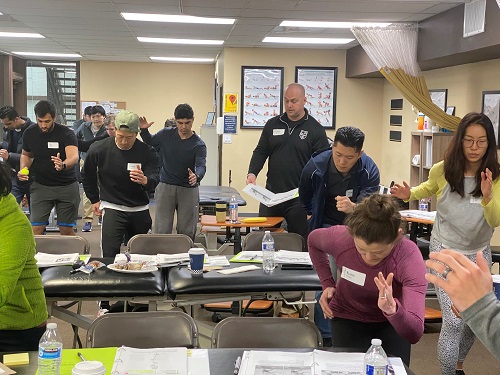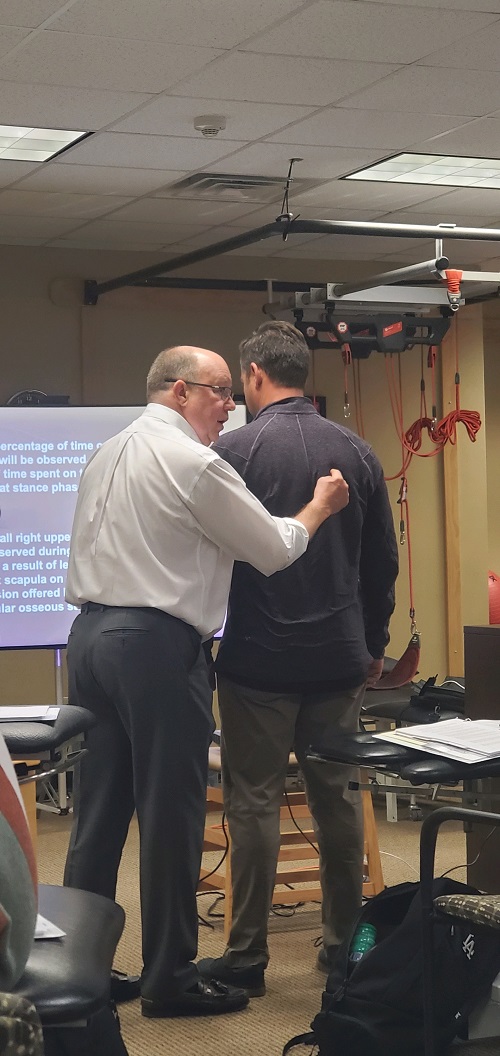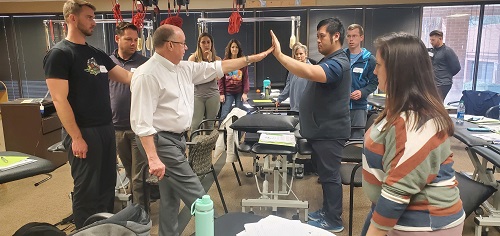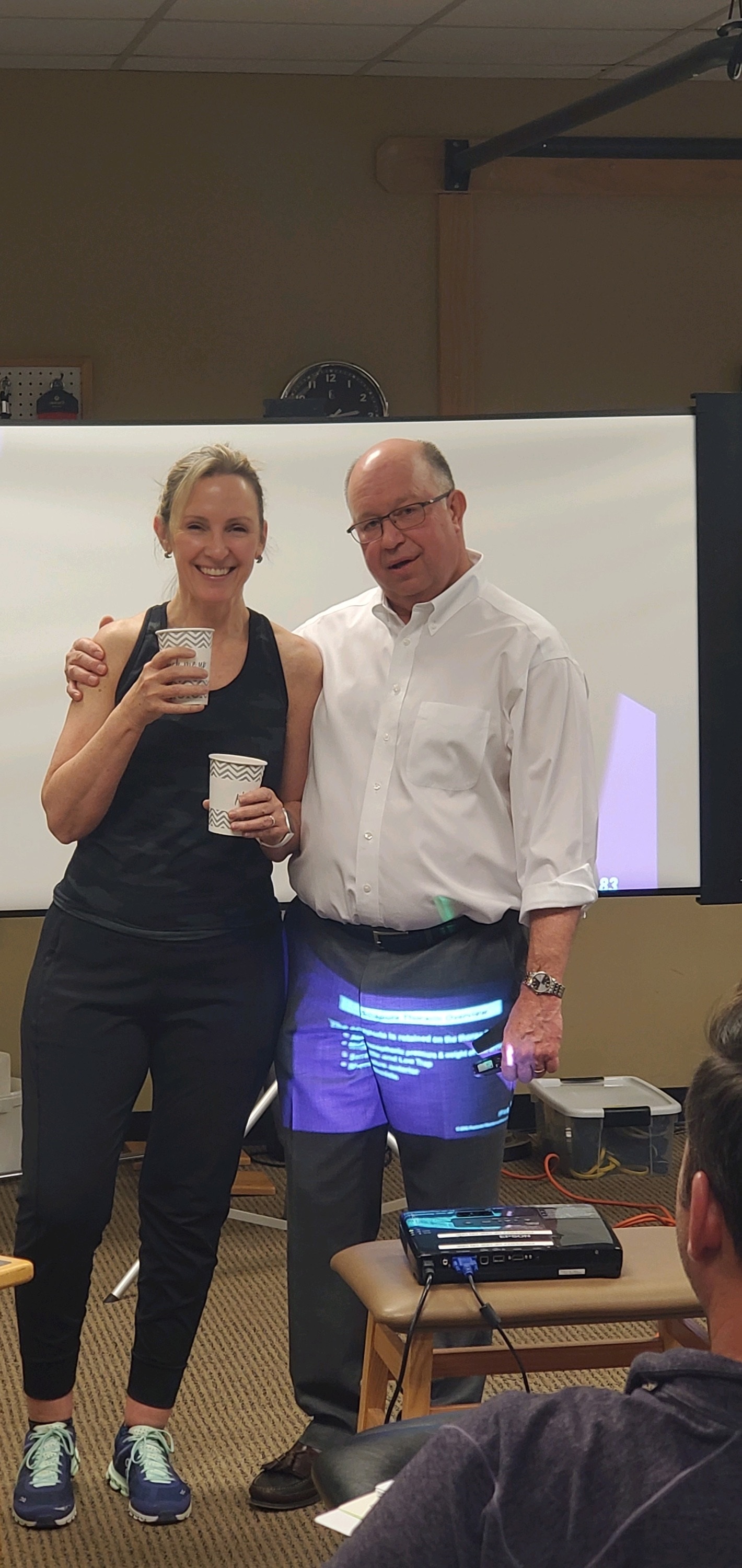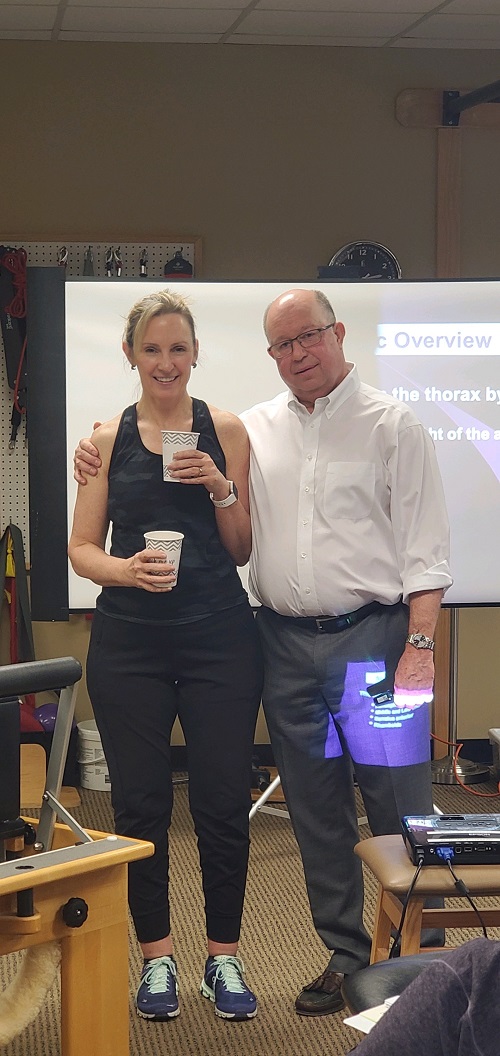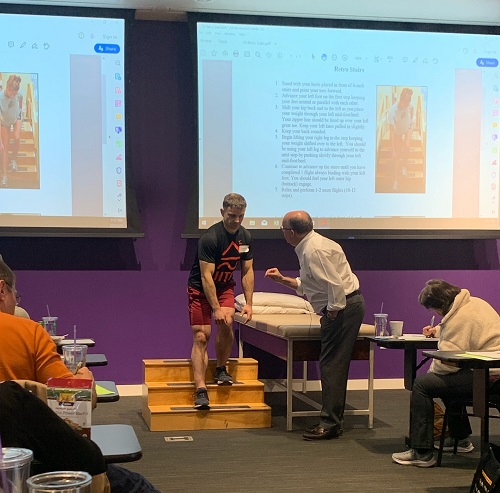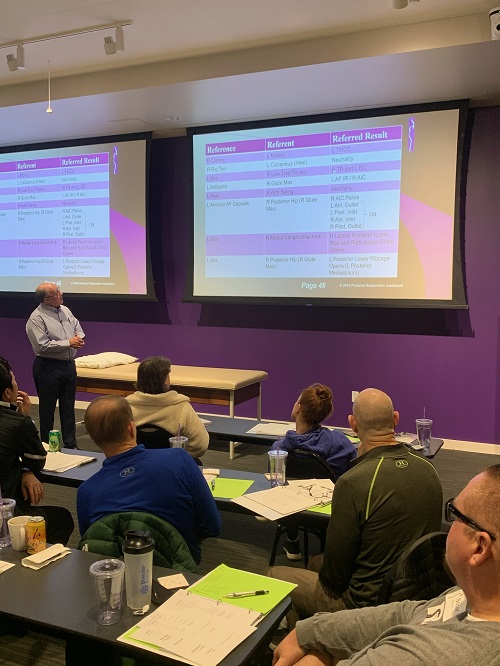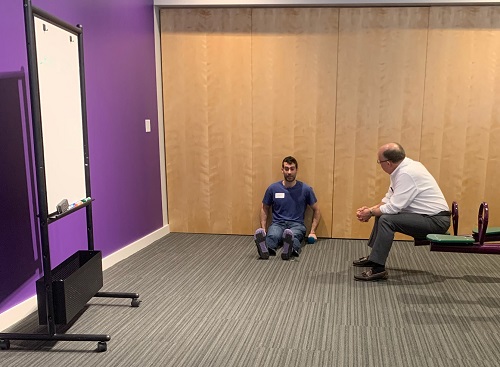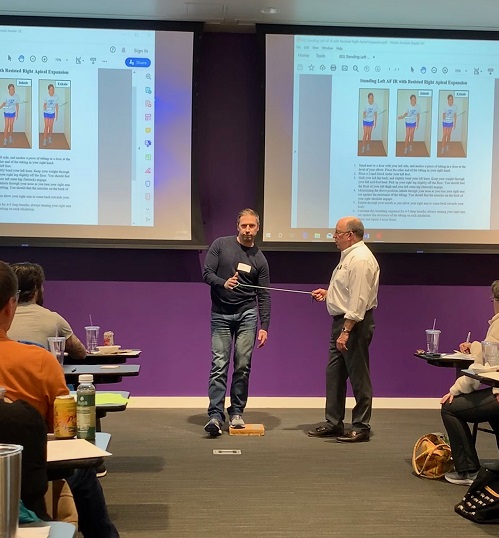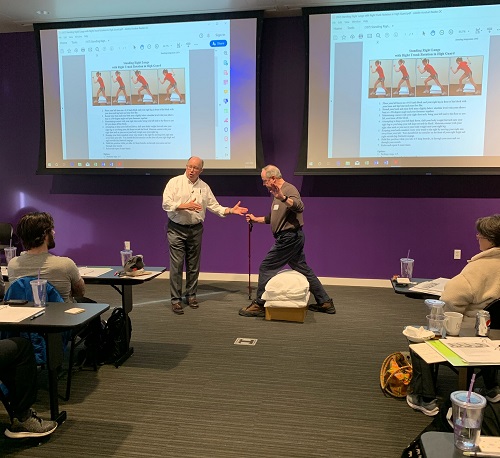Jennifer Smart, DPT, PRC is the headliner for our 12th Annual Interdisciplinary Integration Symposium. This symposium topic came together as a result of the extraordinary work she has been doing with those managing Parkinson’s Disease in her community, and the engaging discussions she has had with Ron over the past couple years. Jen is a clinician at heart, but also one who is current with the research and medical advancements that have been made for those experiencing extrapyramidal symptoms.
Her growing interest in Parkinson’s Disease began around 2015 when her best friend was diagnosed. This was the year she completed the PRC credentialing program, and shortly after neurologist, Dr. Jay Alberts, published research showing how, when a person with PD rides on the back of a tandem that is being pedaled at a cadence of 80-90 RPM, a variety of their PD symptoms decrease. After dissecting the research, Jen bought a tandem bike, and her and her friend rode for over an hour 3 times a week at the specified cadence. Others with PD heard what they were doing, and she ended up getting several tandem bikes and set them up on stationary trainers at a local gym, where she coordinated having members of the local cycling community ride on the front to set the cadence while people with PD rode on the back. “Park’n Ride” was officially started as a non-profit in January 2015.
Based on the success of this cycling program, Jen has become a regional expert on Parkinson’s Disease, where individuals have moved to her small coastal town of Oriental, North Carolina after their diagnosis. She became certified in LSVT BIG, Parkinson’s Wellness and Recovery (PWR!) and Rock Steady Boxing, which are all evidence-based, Parkinson’s-specific programs. Jen has attended the Parkinson’s World Congress and has even volunteered for a week with Becky Farley, PT, PhD who developed LSVT BIG and PWR. In 2017, Jen received a grant from the National Parkinson’s Foundation to organize and run a two-day event, called the Parkinson’s Exercise Program (PEP) Retreat, which was designed to help both patients and medical providers better understand how to use exercise as an evidence-based treatment for PD.
In her own words, “What I have taken away from all of this training, from working extensively with this population, and from the currently exploding literature regarding the benefits of specific exercise programs for PD, is that, perhaps unknowingly, the components that make each of these treatment techniques so effective, are the components that are based on the science of PRI. People with PD, just like all of us, need to be able to rhythmically alternate, but their disease, or somewhere along their journey towards developing this disease, this ability to rhythmically alternate was compromised so they needed to develop involuntary tics, muscle spasms, tremors, restless legs, dystonia and/or postural changes to help them to get to the other side, to help them to alternate. This is now the message that I am trying to get across in both the prevention and treatment of Parkinson’s, and so many other, syndromes or diseases.”
Ron had the opportunity to spend a couple days with Jen in her hometown a few months ago, and had this to say about his experience, “Jennifer is probably one of the most, if not the most respected, individuals in this community. Everyone who lives there knows how much she cares about humanity in general, and how much she dedicates herself to each individual specific needs and limitations. Her compassion, her wealth of knowledge on Parkinson’s Disease, her multi-level of experience, and her successful outcomes are immediately recognized by anyone who observes her classes, talks to her patients or witnesses the respect wherever she goes in this community. I am humbled by all of this and my admiration for her selflessness is unsurpassed.”
Read more about Jen’s upcoming presentations at our 12th Annual Interdisciplinary Integration below:
An Overview of the Science of Movement Disorders as They Relate to Sensory Input and Autonomic-Driven Postural Compensations
This presentation will review various types of movement disorders, examining their association with each other and with other non-motor symptoms, which may appear independently or as prodromal symptoms for various movement disorder syndromes, such as Parkinson’s disease. Current theories as to the causes of movement disorders will be explored, including evidence supporting basal ganglia oscillatory dysfunction, how and why this dysfunction may occur and techniques that are being employed to influence it, including pharmacological, surgical (especially the use of deep brain and/or implanted spinal stimulation) and physical activity interventions. Emphasis will be placed on the evidence supporting how intrinsic oscillations are being altered by afferent stimulation.
Afferentation Techniques and How to Clinically Incorporate Them into the Treatment of Movement Disorders
This presentation will be more clinically applicable, providing information about the current, evidence-based programs that are being used for people with Movement Disorders, examining their common effective elements regarding the movements involved in the activity, the dosage (time and intensity) of the activity, and the auditory, visual and tactile cues that are being used during the activity. Emphasis will be placed on using specific afferentation techniques during these activities in order to alter the need to use pathological postural compensations, or movement disorders, to create a sense of stability and/or a method of mobility.
A Review of Perspective and Progression Influences on Treatment and Management of Patients with Parkinson’s Disease
In this presentation, Jennifer Smart and Ron Hruska will discuss treatment and management of patients with Parkinson’s Disease and review several cases in which they have had the opportunity to collaborate together. Management discussion will include group exercise application, in addition to individual rehabilitation considerations.
